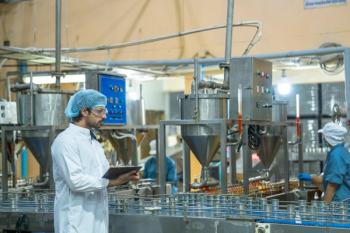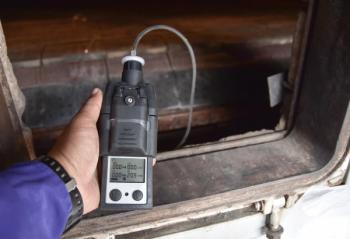
Yingchan Guo Previews Her Thursday Talk on Gas-Phase Charge Inversion Ion Reactions
In this interview segment, Yingchan Guo previews her talk on Thursday and highlights some of the research projects that are ongoing in the Prentice Research Group at the University of Florida.
On Thursday October 9th at 4:00 pm, Yingchan Guo, a researcher in the Prentice Research Group at the University of Florida, will deliver a talk titled, “Characterizing Mechanisms and Energy Surfaces of Proton, Metal, and Methyl Transfer in Gas-Phase Charge Inversion Ion/Ion Reactions Involving Lipids and Diacids” (1,2).
Guo and her colleagues recently investigated the mechanisms that are underlying gas-phase ion/ion reactions between phosphatidylcholine (PC) cations and 1,4-phenylenedipropionic acid (PDPA) dianions. As part of their research, Guo and her team focused on how different PC ion types, including [PC+H]+, [PC+Na]+, and [PC+K]+, influence charge inversion efficiency (2). Using a 7T solariX FT-ICR mass spectrometer, matrix-assisted laser desorption/ionization (MALDI)-generated PC cations and electrospray ionization (ESI)-generated PDPA dianions were reacted and analyzed via SORI-CID, with deuterium labeling employed to trace proton transfer origins.
In her upcoming talk, Guo will also explain how complementary density functional theory (DFT) calculations at the B3LYP/6-31G(d,p) level characterized reaction energetics and transition states. She will describe how the results revealed that proton transfer occurs during charge inversion, while initial methyl transfer from PC to PDPA is highly exothermic and initiates during ion/ion encounter (2). The observed efficiencies and product distributions align with computed energy barriers, showing that charge inversion pathways differ between protonated and metal-adducted PCs (2). Guo will address how these competing reaction mechanisms and inform the design of more selective and efficient ion/ion reagents (2).
Our first clip with Guo explored her talk on Tuesday, which describe a novel charge inversion ion/ion reaction using a multiply charged reagent ion, 1,2,4,5-tetrakis(4-carboxylphenyl)benzene (TCPB), to improve structural identification of phosphatidylcholines (PCs) in IMS (3). In the below clip, Guo previews her talk on Thursday and highlights some of the research projects that are ongoing in the Prentice Research Group at the University of Florida.
This interview clip is part of our interview with Guo. To stay up to date with the latest coverage of the 2025 SciX Conference, click
References
- Prentice Research Group, Yingchan Guo. University of Florida. Available at:
https://prentice.chem.ufl.edu/guo/ (accessed 2025-10-06). - SciX Conference, Characterizing Mechanisms and Energy Surfaces of Proton, Metal, and Methyl Transfer in Gas-Phase Charge Inversion Ion/Ion Reactions Involving Lipids and Diacids. SciX Conference. Available at:
https://www.scixconference.org/2025-final-program (accessed 2025-10-06). - Wetzel, W.; Chasse, J. Yingchan Guo Previews Her Talk on Improving Structural Identification of Phosphatidylcholines. Spectroscopy. Available at:
https://www.spectroscopyonline.com/view/yingchan-guo-previews-her-talk-on-improving-structural-identification-of-phosphatidylcholines (accessed 2025-10-06).
Newsletter
Get essential updates on the latest spectroscopy technologies, regulatory standards, and best practices—subscribe today to Spectroscopy.





